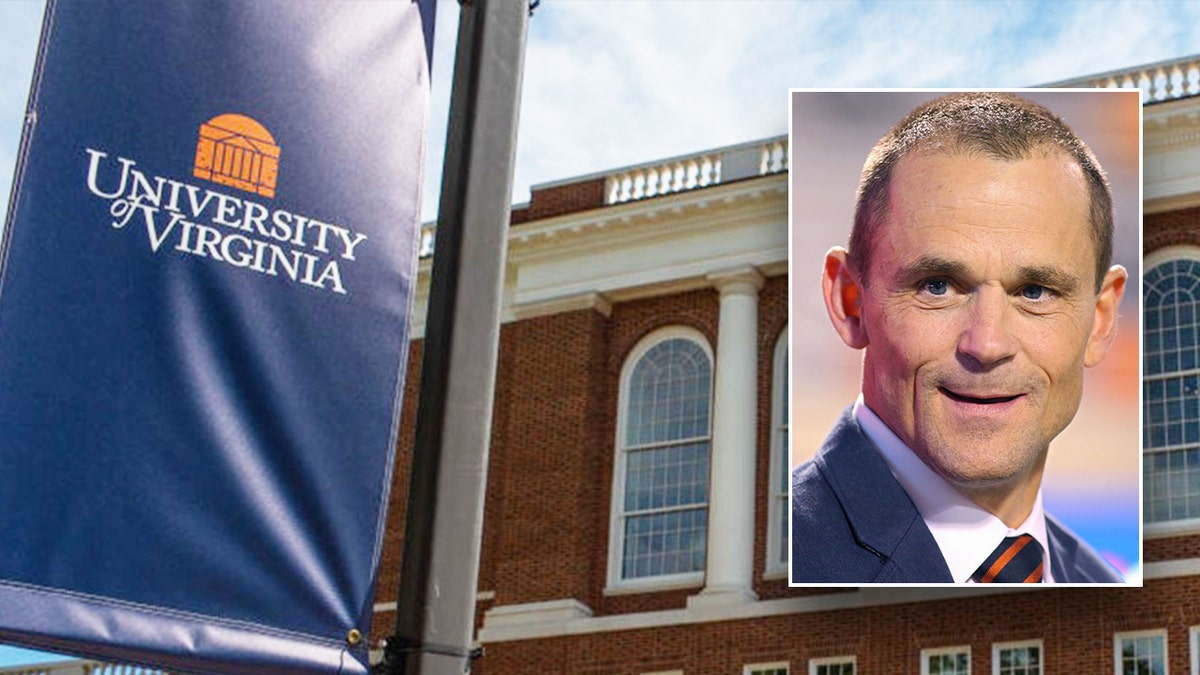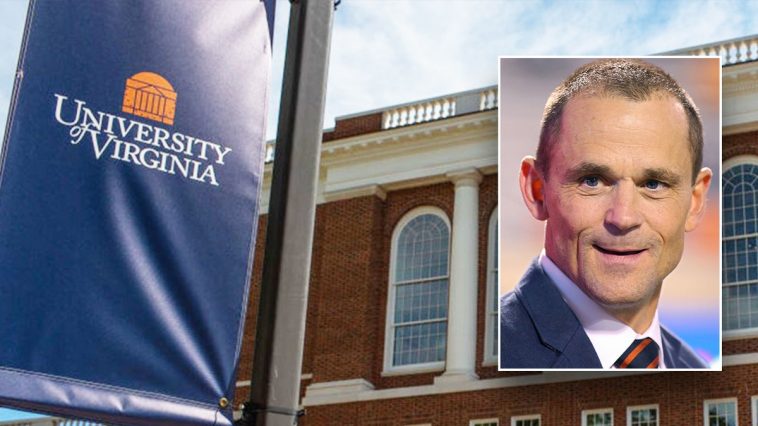

University Autonomy and Federal Funding: A Contentious Crossroads
The recent controversy at the University of Virginia (UVA) has sparked widespread debate regarding the role of federal authorities in university administration and academic policy. At the center of the debate is an explicit warning reportedly issued by the Trump administration stating that if UVA President Jim Ryan did not resign, the institution would face severe cuts to university jobs, research funding, student aid, and even visas for international students. This episode raises several tricky parts in understanding the balance between academic freedom and the influence of national politics on higher education.
At its core, the issue dives into the heart of a government intervention that many see as an attempt to shape educational policy by leveraging economic threats. Critics argue that this move is not just about one university but has far-reaching implications for other institutions across the nation. As a result, we are prompted to ask: Where should the line between political activity and academic independence be drawn?
Political Pressure and Its Impact on Diversity Policies
The saga surrounding President Ryan’s resignation from UVA is emblematic of a broader ideological battle involving diversity, equity, and inclusion (DEI) initiatives. The Trump administration’s explicit threat is seen as an effort to dismantle policies that universities like UVA have implemented to foster a more inclusive and diverse academic environment. Senator Mark Warner’s comments spotlight the stark choices faced by university leaders: resist the federal directive and risk job losses, funding cuts, and compromised educational opportunities, or conform and potentially sacrifice the institution’s progressive agenda.
This situation is loaded with problems for higher education policy and brings to light several tangled issues:
- Is it ethical for a federal administration to pressure academic leaders into altering their policies, especially when those policies aim to address long-standing social inequities?
- How might such pressure affect the overall mission of higher education institutions to foster free thought and academic freedom?
- What are the long-term consequences if universities begin to prioritize political appeasement over their academic objectives?
These questions capture the essence of the debate, highlighting the subtle parts of academic leadership at a time when political power is increasingly intertwined with educational priorities.
Tracing the Roots: History of Federal Influence in Higher Education
The intersection of education and federal oversight is not a new phenomenon. Historically, government agencies have played a role in shaping higher education through funding policies, research grants, and regulatory frameworks. However, the current episode at UVA points to a more direct and intimidating method—a clear case where federal intervention takes the form of a threat to academic leadership.
Looking back at previous instances, one finds that:
| Era | Federal Involvement | Impact on Universities |
|---|---|---|
| Post-WWII Period | G.I. Bill and research grants | Expanded access to education, accelerated scientific research |
| 1960s | Civil Rights enforcement in education | Increased diversity, but also political tensions |
| Recent Times | Increased regulation under certain administrations | Tensions between federal policy and university autonomy |
This table illustrates that while federal influence has often resulted in positive outcomes, such as expanded access to education, recent actions have raised new concerns. When federal directives start to steer the internal policies of academic institutions, the fine points of academic administration become complicated pieces to manage.
Academic Freedom Versus Political Coercion: A Delicate Balance
At the heart of the issue is the age-old debate regarding academic freedom. Universities are traditionally bastions of free inquiry and thought, environments where challenging topics can be addressed without undue external pressure. However, the explicit threat to cut funding if President Ryan did not comply with external political demands challenges this long-held principle.
For those who argue in favor of strong academic freedom, there is a deep concern that such direct political interference undermines the established ethos of higher education. The following points encapsulate the broader concerns:
- Impact on Research: Research funding and university jobs are fundamental to continuous innovation. When these are at risk, the entire ecosystem of academic research may suffer.
- Student Welfare: Decisions impacting student aid and visas do more than disrupt campus life; they potentially limit the opportunities available to bright, emerging scholars.
- Integrity of Leadership: Forcing a resignation through economic pressure undermines the authority and independence of university leadership. Leaders are meant to steer the institution based on educational values rather than political expediency.
These considerations drive home the fact that the subtle details of academic management are now being repainted by outside political forces. With federal agencies stepping in, universities are forced to steer through challenges that were once considered strictly internal matters.
Evaluating the Broader Effects of Federal Overreach
Assessing the situation from a wider angle, one cannot help but wonder what the overarching consequences might be if similar tactics are employed on campuses across the country. The actions taken—or threatened—against UVA could set a precedent that influences how universities respond to federal pressure in years to come.
It is important to consider some of the key long-term effects:
-
Chilling Effect on Institutional Innovation:
Universities striving to create diverse and inclusive educational environments might become wary of implementing progressive policies if they are susceptible to federal reprisals. This could lead to a stagnation in innovative educational reform.
-
Loss of Academic Talent:
If universities are seen as battlegrounds for political influence, world-class scholars and researchers might choose to flee to institutions with clearer boundaries between academic leadership and political oversight.
-
Shift in University Priorities:
Under pressure, institutions may prioritize short-term compliance over the long-term benefits of groundbreaking research and inclusive educational policies. Such a shift could have profound impacts on educational quality and student outcomes.
The above points underscore the potential for federal overreach to reshuffle the priorities of American higher education. When leaders are forced into decisions driven by political expediency rather than educational mission, the consequences are far-reaching and deeply problematic.
Handling Funding Cuts: The Economic and Social Toll
The threats of funding cuts discussed in the UVA case need to be examined within the broader economic context. Federal funding is a critical lifeline for many universities, particularly those heavily invested in rigorous research programs and student aid initiatives. When institutions are coerced into altering their policies under the threat of economic harm, the following negative outcomes can occur:
- Job Losses: Direct cuts to university positions not only affect the livelihood of individual employees but also weaken the institution’s overall operational capacity.
- Reduced Research Opportunities: Research activities, particularly those that require continuous funding for long-term projects, may be forced to downscale, delaying innovations that could benefit society at large.
- Student Financial Support: Students reliant on financial aid and international students, who often come with diverse and enriching experiences, may find their opportunities diminished. Such cuts have a multiplier effect on the academic community and can discourage future applicants who might otherwise contribute profoundly to campus diversity and excellence.
These economic effects are emblematic of the tricky parts found at the intersection of academic policy and political coercion. Without a clear framework that protects universities from such direct intervention, the resulting unraveling of support systems could have a dangerous impact on American higher education.
DEI Initiatives: Balancing Progress with Political Realities
The efforts made by President Ryan to advance diversity, equity, and inclusion (DEI) at UVA were seen as essential moves towards creating a more balanced academic environment. DEI initiatives are often embraced by educators as a way to address historical imbalances and create a more vibrant learning community. However, when such initiatives become the target of political pressure, the outcome is a collision of progressive values and political conservatism.
The situation at UVA illustrates a classic dilemma: How do institutions manage their commitment to DEI in the face of political maneuvers that view these efforts as politically motivated rather than educationally warranted? The specific issues include:
- Policy Scrutiny:
Political figures may claim that DEI programs are not serving their intended purpose, even as research and student testimonials suggest they enrich campus life. This contradictory stance can leave university leaders caught between supporting progress and avoiding political fallout.
- Public Perception:
Public sentiment is often swayed by political rhetoric, meaning that institutions championing DEI might face criticism not only from political opponents but also from segments of the community that view these initiatives as unnecessary or divisive.
- Implementation Challenges:
While DEI projects aim to create balanced, inclusive environments, they also must navigate the little twists of policy implementation. These can include managing funding, adjusting curricula, recruiting diverse staff, and ensuring that changes do not inadvertently create new challenges.
The broader implication is clear: DEI efforts are not isolated from the political battlefield. Instead, they have become a focal point for testing the boundaries of academic freedom against the pressing demands of national policy. This tug-of-war forces educational leaders to figure a path that honors institutional values without risking the essential support needed for the university to thrive.
Academic Leadership on the Edge: Weighing Self-Sacrifice and Institutional Duty
Jim Ryan’s resignation did not come lightly. His decision was influenced by an environment where the cost of resistance was measured not only in personal job security but also in the potential loss of hundreds of jobs, critical research funds, and essential student aid. In his resignation message, Ryan expressed that he could not make a unilateral decision to directly fight the federal government if doing so meant imperiling the broader community he served.
This situation brings forward several tangled issues regarding the responsibility of academic leaders:
- Self-Sacrifice versus Institutional Duty:
University presidents are often expected to be both visionary leaders and pragmatic administrators. In moments where external pressures mount, leaders must decide whether to stand their ground or to step aside in hopes that the institution can preserve its functioning without the weight of political reprisal.
- Community Impact:
Ryan’s resignation underscores the importance of protecting community resources—jobs, funding for research, and financial aid for students. The head of an institution must sometimes absorb personal costs to ensure that the greatest number of people do not suffer from policy clashes engineered in Washington.
- Long-Term Institutional Health:
Decisions made under these circumstances might secure short-term gains in political compliance but can also sow seeds of long-term uncertainty about the institution’s direction. It raises the question: Would a headstrong fight against political interference yield lasting institutional strength, or would the damage to community infrastructure be too severe?
This section of the debate reminds us that leadership in higher education is a complex dance—a balancing act where the individual’s choices are deeply entwined with the fate of an entire academic community.
Political Infrastructure and the Question of University Autonomy
Senator Mark Warner’s outspokenness on the matter highlights a broader concern: if federal authorities can apply such pressure on one university, similar tactics might soon become common practice across other institutions. Warner’s statements that “if they can do it here, they’ll do it elsewhere” resonate with many who fear that political interference may soon extend its reach to all corners of American higher education.
This scenario triggers a series of questions regarding university autonomy:
-
What are the limits of Congressional and presidential power when it comes to public and private universities?
While federal funding continues to be a cornerstone of many academic institutions, it should not come at the expense of the self-governing nature that universities have long enjoyed.
-
How can universities safeguard their decision-making processes?
Institutions might need to develop internal policies or even legal strategies to protect themselves from politically motivated financial or administrative pressures.
-
What mechanisms exist for accountability when government overreach disrupts educational governance?
The need for independent oversight, perhaps by bipartisan commissions or academic watchdog organizations, becomes increasingly important in a politically charged environment.
These questions, full of issues and challenges, compel both policymakers and educational leaders to take a closer look at how to balance political accountability with the necessity for institutional independence.
Strategies for Preserving Academic Freedom Amid Bureaucratic Interference
Given the current political climate and the clear indications of federal interference in university operations, it is essential to discuss potential strategies that could serve as buffers against such overreach. Academic institutions must find ways to protect their autonomy while maintaining the benefits of federal funding. Some practical strategies include:
- Establishing Clear Guidelines:
Universities can work with state and local governments to develop clear guidelines that outline the acceptable boundaries of federal involvement. These guidelines should aim to protect key aspects of academic freedom and campus governance.
- Legal Safeguards and Advocacy:
Engaging in proactive legal measures and advocacy can help institutions defend their rights in court. By partnering with legal experts and advocacy groups, universities can build a united front against policies that threaten their autonomy.
- Building Robust Funding Models:
Reliance on federal funding can be balanced by increasing state support, private investments, and alternative revenue streams. A diverse funding model offers a buffer against politically motivated cuts.
- Promoting Transparent Dialogue:
Maintaining open channels of communication with policymakers, community leaders, and the public helps build trust and mutual understanding. Transparent dialogue allows concerns to be aired and addressed proactively.
The above strategies serve as practical steps that universities can adopt to safeguard their academic missions. They represent not only a method to get around immediate political pressures but also a longer-term investment in the resilience of higher education institutions across the nation.
The Role of the Public and Academic Communities in Defense of University Autonomy
Beyond internal strategies, the broader academic community and the public at large play a critical role in defending the independence of educational institutions. When federal authorities impose conditions that threaten the well-being of universities, it is the responsibility of students, educators, and community members to take a stand.
Several avenues exist for collective action, including:
- Grassroots Advocacy:
Organized campaigns, protests, and advocacy efforts can amplify concerns about federal overreach. When the public is informed and vocal, political pressure can be redirected towards more balanced policies.
- Engagement in Policy Development:
Active participation in local and state policymaking can help ensure that educational issues remain a priority in legislative agendas. Academics, students, and alumni can all contribute valuable perspectives to the discussion.
- Utilizing Media Platforms:
Op-eds, public debates, and social media campaigns can raise awareness about the subtle details of government interference in academic matters. Effective communication is key to rallying support and influencing public opinion.
In this way, the combined efforts of academic communities and the public can help create a protective sphere around universities. In times when external pressures become both intimidating and overwhelming, a strong and engaged community can be a super important asset for institutional stability.
Learning from the UVA Episode: Lessons for the Future
The events at the University of Virginia serve as a stark reminder of the hidden complexities and challenging twists inherent in managing higher education in a politically charged environment. While the specifics of President Ryan’s resignation are unique, the broader lesson is clear: when federal authorities use economic threats to dictate academic policy, the consequences extend far beyond a single campus.
Key takeaways from the UVA episode include:
- Understanding Political Leverage:
University leaders must be aware of how political pressures can manifest as direct threats to funding and institutional stability. Recognizing these tactics is the first step towards developing effective countermeasures.
- Valuing Academic Independence:
It is essential that institutions uphold the principle of academic freedom. Educational institutions thrive when they are free to pursue research, foster innovation, and promote inclusive policies without the fear of political retaliation.
- Building Community Resilience:
The strength of a university lies in its community—faculty, staff, students, and alumni. A united front that advocates for academic independence can help steer through the intimidating parts of politically driven challenges.
These lessons are not only pertinent to UVA but resonate with every higher education institution in the country. As we watch further developments unfold, the need to protect the sanctity of academic governance becomes ever more critical.
Charting a Course Forward: Balancing Policy, Funding, and Institutional Integrity
Moving forward, universities must take decisive steps to fortify their defenses against future instances of political interference. The challenge lies in figuring a path that balances the demands of federal funding with the core mission of academia. To do so, institutions might consider:
- Institutional Self-Assessment:
Universities should continuously review and reassess their policies to ensure that they are resilient in the face of external pressures. Regular audits of funding dependencies and policy strategies can help forecast potential vulnerabilities.
- Strategic Partnerships:
Creative partnerships with private entities, state governments, and international organizations can offer alternative sources of support. Such partnerships provide a buffer against the potentially nerve-racking decisions imposed by federal agencies.
- Long-Term Vision and Accountability:
Developing a transparent, long-term vision that aligns with both academic goals and community values is essential. University boards and administrations need to be accountable to their stakeholders, ensuring that short-term political gains do not undermine the institution’s core mission.
In this manner, higher education institutions can work through the complicated pieces of modern governance while maintaining the traditions of academic freedom and excellence. The challenge—though undoubtedly intimidating—can be managed with foresight, dialogue, and a commitment to the unique role that education plays in society.
A Call for Balanced Dialogue and Mutual Respect in Education Policy
The discussion sparked by the actions taken against the University of Virginia is complex and demands a balanced approach. It is crucial to recognize that while federal involvement in education has historically brought about beneficial changes, its current application in politically sensitive areas such as DEI initiatives must be reexamined. The path forward lies in an honest dialogue between policymakers, educational leaders, and the public.
Key recommendations for achieving this balance include:
- Reexamining Federal Roles:
A review of federal policies regarding higher education can help define clear boundaries that protect both academic innovation and necessary governmental oversight.
- Encouraging Bipartisan Efforts:
Bringing together voices from different political backgrounds to create policies that reflect both the values of academic freedom and the financial realities of modern governance.
- Fostering Community Consensus:
Universities and their stakeholders can develop codes of conduct and ethical guidelines that reinforce the principles of academic independence, even when under pressure.
It is only through such balanced dialogue and mutual respect for both academic values and responsible governance that we can ensure the continuity of high-quality, inclusive education. The decision-making process must be transparent, non-partisan, and above all, guided by the belief that academic institutions are pivotal in shaping a thriving, innovative society.
Conclusion: Reflecting on the Intersection of Education and Politics
The unfolding events at the University of Virginia offer a revealing glimpse into the tangled issues at the intersection of education, funding, and political influence. While the pressures exerted on President Jim Ryan and UVA are specific to a particular moment in time, their implications are far-reaching. They force us to confront a series of challenging questions about the role of government in shaping academic policy.
This opinion editorial has taken a closer look at the multifaceted debate, examining everything from the threats of funding cuts to the broader impact on academic freedom and DEI initiatives. The discussions, while often laced with intimidating and overwhelming scenarios, also reveal opportunities for reform and strengthened institutional resilience.
Universities across the nation must recognize that their survival hinges not only on securing funds but also on preserving their independence. With proactive strategies, open communication, and a commitment to mutual respect, higher education can continue to thrive in the face of political pressures. The need to balance policy, funding, and institutional integrity has never been more critical, and the lessons learned at UVA are a call to action for all stakeholders in the academic community.
As we reflect on these events, it becomes clear that the path forward lies in maintaining an unwavering commitment to academic freedom and fostering robust dialogue among all parties involved. Only then can universities ensure that they remain centers of knowledge and innovation, even as they work through the nerve-racking twists and turns of today’s political landscape.
In conclusion, the saga at UVA is not merely a story about one university or one resignation. It is a mirror reflecting the broader struggles within our educational system—a reminder that when the fine points of academic governance become entangled with political agendas, the very future of education is at stake. By learning from these events and implementing strategic measures, we can safeguard the integrity of our institutions and continue to nurture the spirit of inquiry that is essential to the progress of society.
Originally Post From https://www.theguardian.com/us-news/2025/jun/29/trump-threats-university-of-virginia-mark-warner
Read more about this topic at
TodayCNN News
The Daily Agenda: A banner day for lawsuits


